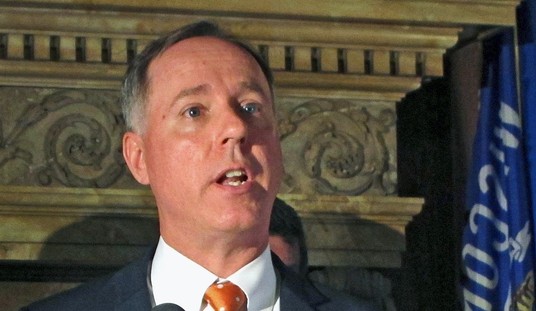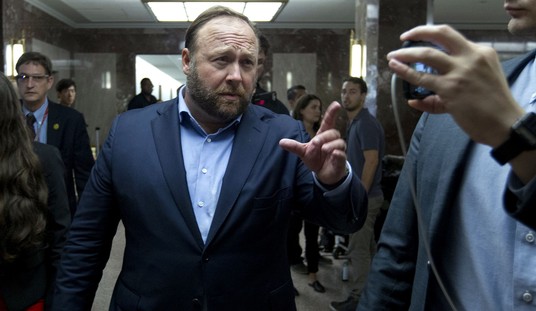It’s headed straight down the toilet in the Senate but not half-bad as a PR ploy designed to show the party’s reasonableness on cuts. GOP problem: Obama keeps complaining that the sequester is a blunt instrument that’ll impose all sorts of hardships because it cuts spending indiscriminately, across the board. What we need are more targeted cuts aimed at agencies that are better prepared to cope with them. GOP solution: Let Obama and his agency chiefs pick the targets then. When people start complaining that they’ve been furloughed or that they have to wait in line at the airport for 11 hours or whatever, they can thank the Lightbringer for slashing their budget.
One question. When was the last time a Republican PR ploy really worked, especially during a budget death match? This one might matter for half a day, until Reid kills it to protect Obama and Democrats lead the media back towards the evergreen “what about new revenues?” talking point.
The irony is that in the near term, the GOP’s proposed fix would delegate a great deal of authority to the executive branch — and thus to President Obama. And for the GOP that would come with the risk that the administration would target the cuts at GOP constituencies, which would undermine the political rationale for their own plan.
But aside from that potential flaw it’s a clever idea. In effect, it’s a sequester replacement bill minus the political cost of proposing specific alternative cuts to federal programs. It would set a new, lower baseline for spending at the executive departments, including defense, and leave it to bureaucrats, or future congressional leaders, to determine which programs are high priority and which are not. It would still constitute significant austerity — $85 billion in cuts over the next several months — but would lead to a substantively better outcome than if President Obama were forced to order the sequester in its current form…
Senate Democrats expect Republicans to offer up a plan like this as an alternative to their own sequester replacement bill, and are poised to vote it down, according to a senior Democratic aide.
A Senate source tells the Examiner that the GOP leadership is discussing this idea seriously; a House source tells them that they’re really not keen on handing O the authority to start cutting whatever he wants. Either way, this is basically just Pat Toomey’s idea of authorizing Treasury to prioritize payments in case we hit the debt ceiling, except applied to a different budgetary context. That was also an attempt to soften public opinion towards the GOP for supporting a sudden halt to spending. Here’s the baseline we’re starting from now on the sequester, per Pew:

In the same poll, 76 percent say they support the so-called “balanced” approach of cuts plus new revenues versus just 19 percent who support cuts alone. (Does the new revenue raised by the tax hikes that took effect just last month count? I know what O would say.) Guy Benson looks at the data and at Obama’s machinations and despairs:
This is a great gig, if you can get it. You conceive of a bad idea, demand that it be given the force of law, sign it into existence, and adamantly oppose efforts to alter or undo it — then when it no longer serves your fleeting political purposes, you drop the whole thing in the lap of your adversaries, and most people buy it. Let’s face it: Average people don’t know what sequestration is, what it would do, or why it even exists. If they were briefed on the very basics, these numbers would probably shift a bit, but most Americans have no appetite for following Washington’s endless political brinksmanship. So what do they do when a pollster calls to ask about the latest impending crisis? They use shortcuts. Although he’s not especially popular, the president is viewed much more favorably than Republicans in Congress these days. Between this reality and the supine posture of his battered-spouse media supporters, Obama occupies the public opinion high ground in most of these battles, even before he begins his tendentious bullying. On broad and intuitive issues like guns and Obamacare, his powers of persuasion are limited. But on easily-demagogueable budget minutiae with baffling names like “sequestration,” a lot of people don’t quite understand what’s going, nor do they really want to know. So they pick the guy they like better.
Yeah, but it’s not just the popularity contest that’s driving this. For better or worse, since 2009, the GOP’s brand has been built on the idea of cutting spending. It’s the core concern of the tea partiers who swept them to power in the House in 2010. Whenever we reach a budget crisis and the left’s/media’s doomsaying about cuts begins, it’s inevitable that the party that champions cuts will be blamed for that crisis. Plus, there’s historical baggage — the tea party’s polling took a hit after the debt-ceiling standoff in 2011 and even some low-information voters remember Newt’s shutdown in the 90s. When voters hear that something “draconian” is about to be done in the name of reducing spending, their thoughts gravitate to precedents like that and it informs their view of the present situation. Bobby Jindal, in particular, has been almost frantic in trying to get the party to shift its emphasis from cuts to economic growth, partly for this very reason. If you’re going to plant your flag on reducing spending, especially mandatory spending, in the name of fiscal sustainability, you need to be confident that the public is prepared to sacrifice in order to achieve that. What evidence is there that they are?
I’ll leave you with this, just to give you a sense of how likely it is that this GOP PR maneuver will work. It’s not a parody; this image really is fronting WaPo’s website as I write this.
Washington Post is being very subtle about its sequestration coverage. http://t.co/2by8wcj328
— Drew McCoy (@_Drew_McCoy_) February 21, 2013








Join the conversation as a VIP Member